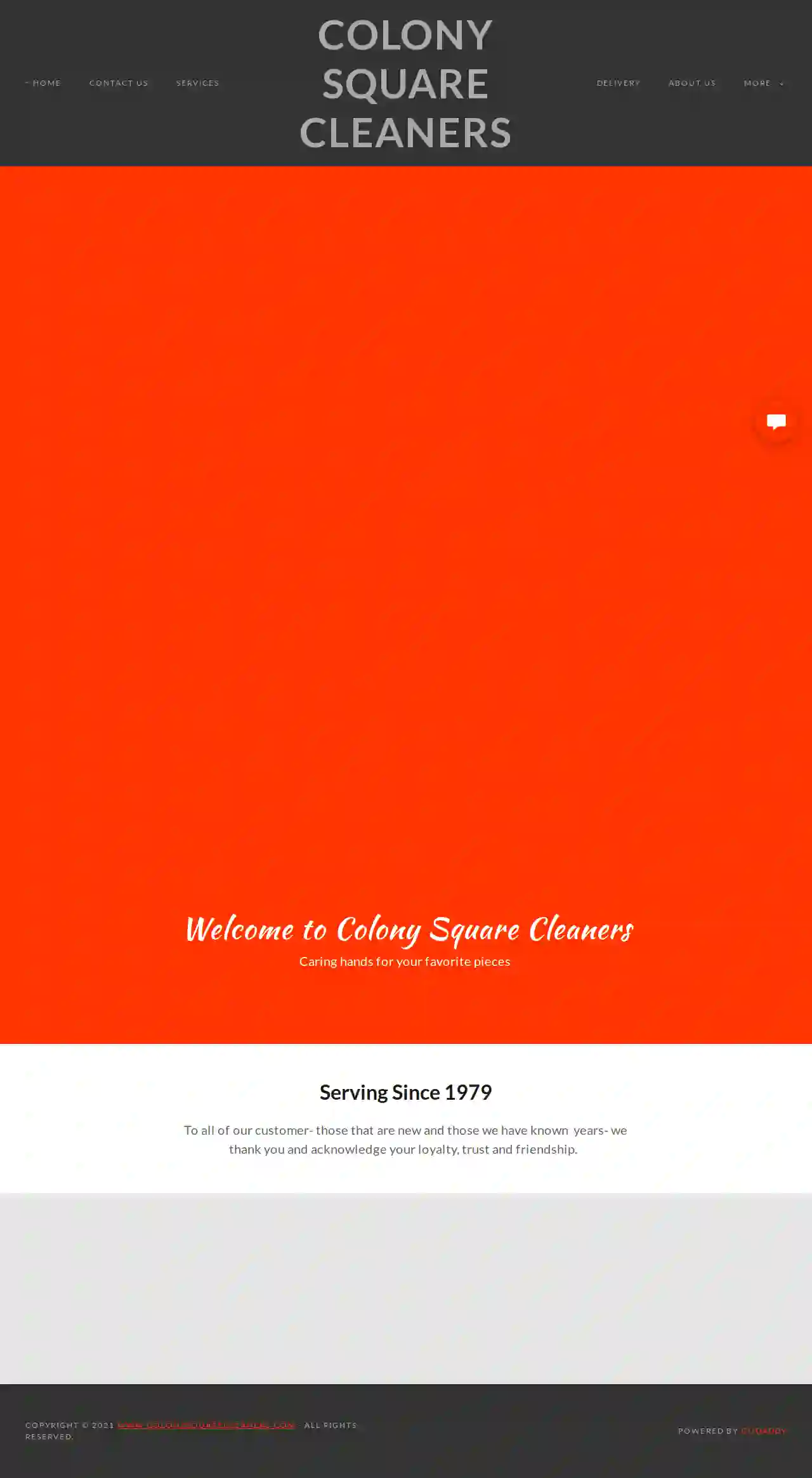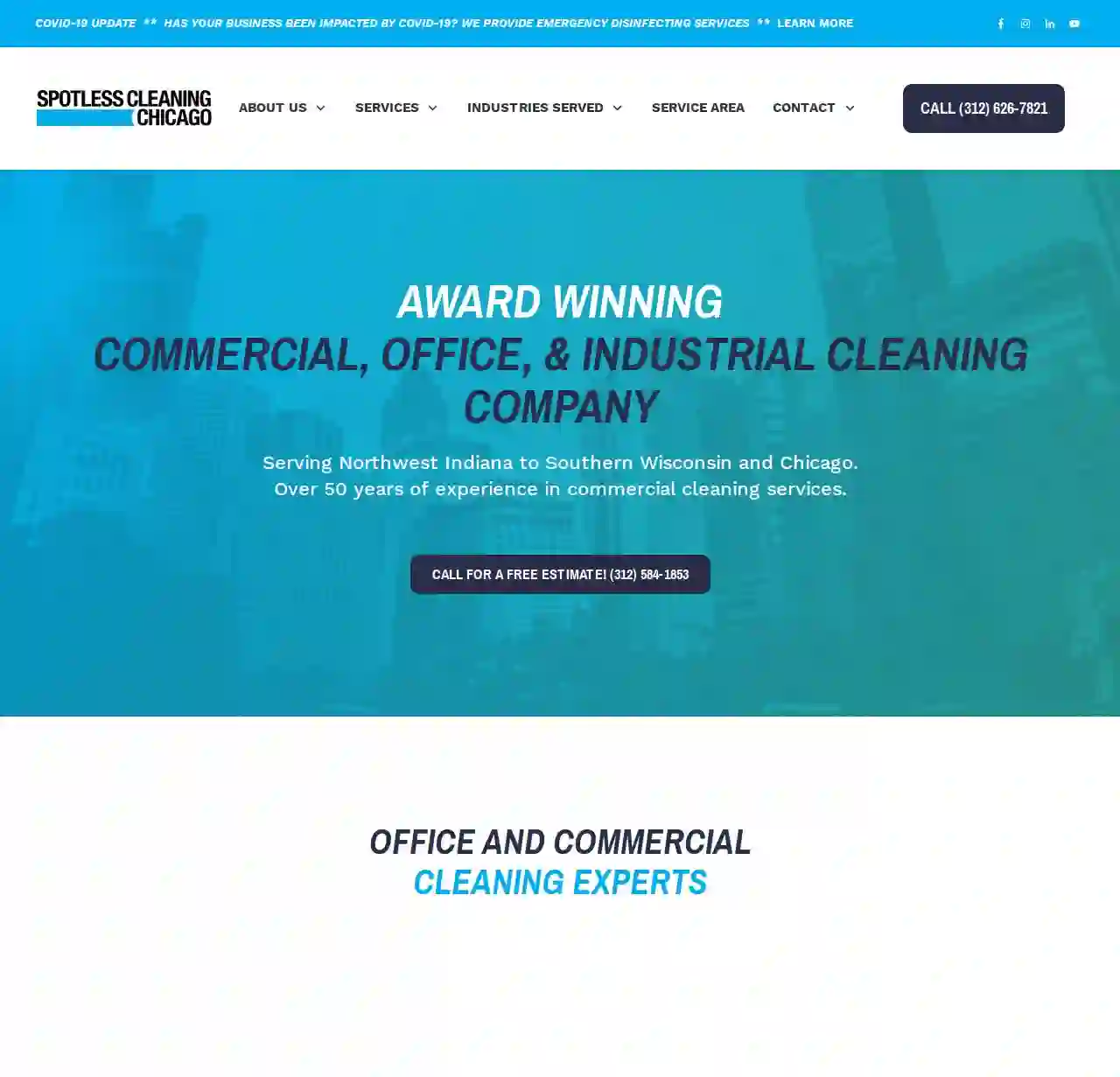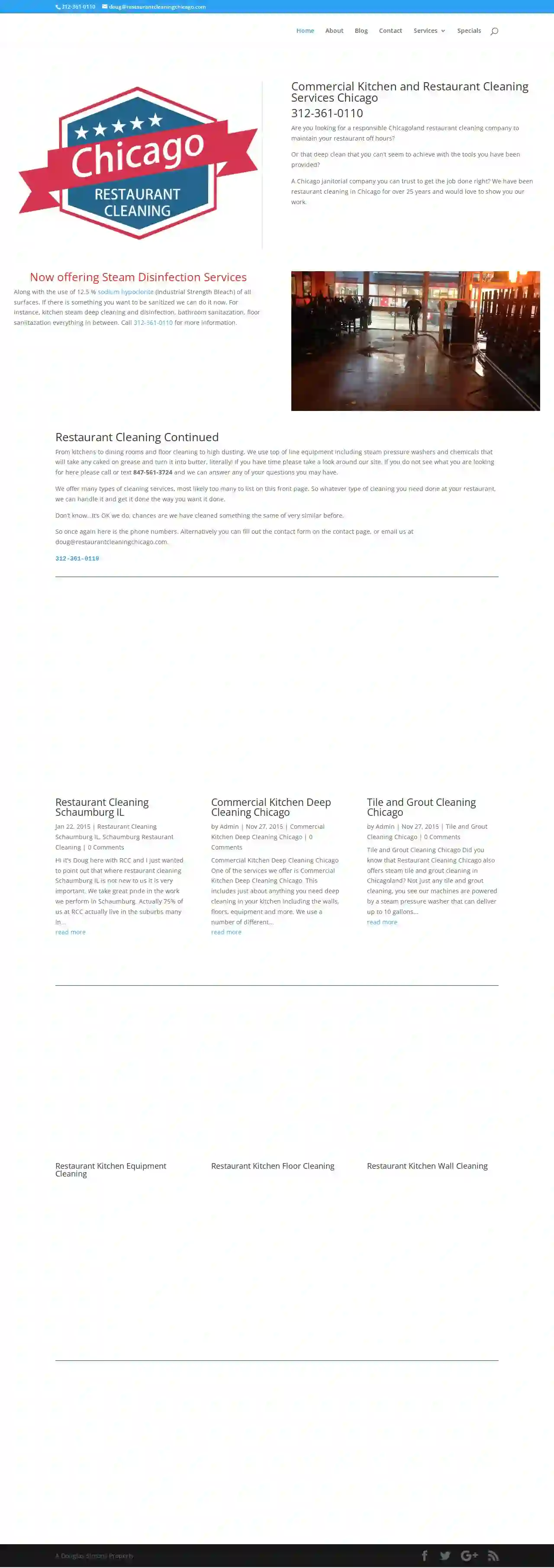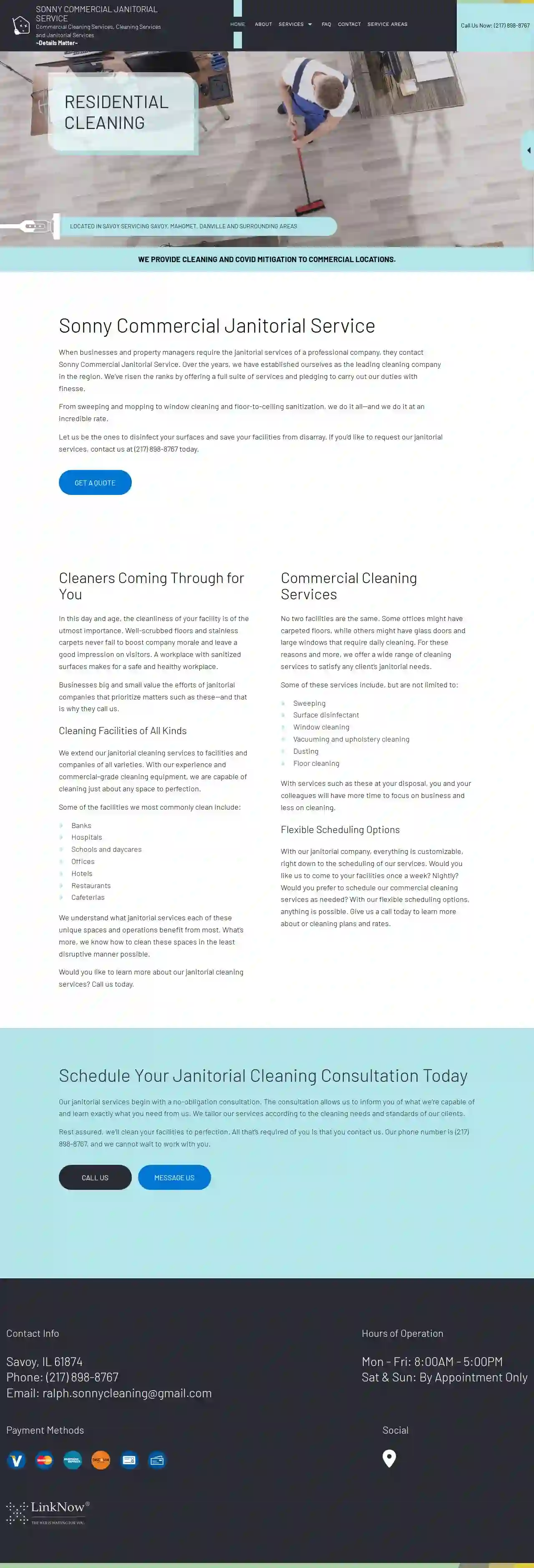Cleaning Services Marion
Best Residential Cleaning in Marion
Receive up to 3 Cleaning Companies quotes for your project today! Compare profiles, reviews, accreditations, portfolio, etc... and choose the best deal.

Colony Square Cleaners
4.833 reviews701 Devonshire Drive, Champaign, 61820, USWelcome to Colony Square Cleaners, your trusted partner for all your cleaning needs. With over 40 years of experience, we have been serving the community with care and dedication. Our team is committed to providing you with the best possible service, ensuring that your favorite pieces are treated with the utmost care. We offer a wide range of services, including on-site dry cleaning, shirt service, fluff-n-fold laundry, commercial laundry, alteration and repair, suede and leather cleaning, and shoe repair. Our state-of-the-art facilities and experienced staff ensure that your garments are cleaned and cared for to the highest standards. At Colony Square Cleaners, we value our customers and appreciate the trust you have placed in us. We are committed to providing you with exceptional service, quality, and value. Thank you for choosing us, and we look forward to serving you for many years to come.
- Services
- Why Us?
- Gallery
Get Quote
Spotless Cleaning Chicago
4.952 reviews2844 W 59th St, Chicago, IL, 60629, USAward-winning commercial, office, and industrial cleaning company serving Chicago, Illinois, Northwest Indiana, and Southern Wisconsin. Offers customized cleaning plans, green-friendly practices, and cutting-edge technology for efficient and safe cleaning services.
- Services
- Why Us?
- Accreditations
- Our Team
- Testimonials
- Gallery
Get Quote
Restaurant Cleaning Chicago
4.52 reviews123 Main St, Chicago, IL, 60601, USRestaurant Cleaning Chicago specializes in providing top-notch cleaning services to restaurants in the Chicago area. With over 25 years of experience, they offer a wide range of services including kitchen equipment cleaning, tile and grout cleaning, and more. Their team is dedicated to ensuring that your restaurant is clean and safe for customers. They use state-of-the-art equipment and eco-friendly cleaning solutions to ensure a sparkling clean environment.
- Services
- Why Us?
- Accreditations
- Our Team
- Testimonials
- Gallery
Get Quote
Morfin Cleaning Services
4.7107 reviewsChicago, IL, 60607, 1234 W. 18th St., USMorfin Cleaning Services, founded in 2013, is a family-owned company offering top-quality commercial cleaning services in Chicago. Our commitment to perfection has resulted in consistent growth each year. We prioritize our clients' needs, taking the time to truly listen and provide exceptional residential and commercial cleaning services that bring peace of mind. Our staff consists of highly experienced and loyal professionals who are integral, committed, and hardworking.
- Services
- Why Us?
- Accreditations
- Our Team
- Testimonials
- Gallery
Get Quote
Sonny Cleaning
511 reviewsChampaign, US- Services
- Why Us?
- Gallery
Get Quote
ASF Cleaning & Auto Detailing
Aurora, USAt ASF Cleaning, we understand the importance of having a clean and organized living or working space. Our team of professionals is committed to providing superior cleaning services to satisfy the demands of our customers. In addition to our regular cleaning services, we also offer specialized services such as move-in/move-out cleaning, post-construction cleaning, and more. We believe that our team is the best in the business, and have complete and total confidence in every person providing our services. ASF Cleaning finishes each project on schedule and with the highest level of quality. With a focus on personalized service, competitive rates and customer satisfaction, we’re always striving to meet and exceed expectations.
- Services
- Why Us?
- Accreditations
- Our Team
- Testimonials
- Gallery
Get Quote
SERVPRO of Northwest Lake County
4.846 reviewsSuite 101, 1860 N IL Route 83, Grayslake, 60030, USSERVPRO of Northwest Lake County is a trusted leader in the restoration industry, providing advanced training and equipment to clean and restore homes and businesses. As a locally owned and operated franchise, our highly-trained team of certified professionals is ready to respond 24/7 to any size disaster. With a mission to not only repair damage but also restore lives and confidence, we strive to build lasting relationships with our customers.
- Services
- Why Us?
- Accreditations
- Our Team
- Gallery
Get Quote
J&G Residential Commercial Cleaning LLC
57 reviews8569 N Sheridan Rd, #432, 8569 N Sheridan Rd #432, Beach Park, 60087, USWelcome to J&G Residential Commercial Cleaning LLC At J&G Residential Commercial Cleaning LLC, we are constantly striving to improve our already high standards to ensure you see us as the absolute best in the industry. It's not enough to simply have trust in our cleaning; we want you to experience the difference. Residential Regular residential cleaning not only keeps your home spotless but also improves air quality, reduces allergens and dust buildup, ultimately benefiting your health. Commercial Maintaining a clean and organized office not only enhances your company's image but also positively impacts productivity and employee motivation. Regular cleaning reduces the spread of germs and illnesses, decreasing absenteeism and improving the overall health of your team.
- Services
- Why Us?
- Gallery
Get Quote
Dreams Cleaning Services - Commercial Cleaning.
517 reviewsChicago, US- Services
- Why Us?
- Gallery
Get Quote
Enviro-Master of Denver South
5269 reviewsAurora, US- Services
- Why Us?
- Gallery
Get Quote
Over 60,241+ Cleaning Companies in our network
Our cleaning pros operate in Marion & surrounding areas!
CleaningMatch has curated and vetted Top Janitorial Services in Marion. Find the most reliable contractor today.
Frequently Asked Questions About Cleaning Services
- Residential Cleaning: Covers cleaning homes, apartments, and other living spaces.
- Commercial Cleaning: Focuses on cleaning offices, retail stores, and other business establishments.
- Deep Cleaning: A thorough and intensive cleaning that covers areas often neglected during regular cleaning.
- Move-In/Move-Out Cleaning: Comprehensive cleaning performed before or after moving into or out of a property.
- Post-Construction Cleaning: Specialized cleaning after construction or renovation projects to remove debris and dust.
- Specialized Cleaning: Includes services like carpet cleaning, window cleaning, upholstery cleaning, and more.
- Regular dusting: Dust frequently using microfiber cloths or a duster. Pay attention to surfaces that attract dust, such as shelves, electronics, and furniture.
- Vacuuming: Vacuum carpets and rugs regularly using a vacuum cleaner with a HEPA filter to trap dust mites and allergens.
- Air Purifier: Consider using an air purifier to remove dust particles and allergens from the air.
- Reduce Clutter: Clutter provides more surfaces for dust to settle. Declutter regularly to minimize dust traps.
- Window Treatments: Wash or vacuum window treatments, such as curtains or blinds, regularly to remove dust buildup.
- Bedding: Wash bedding, including sheets, pillowcases, and blankets, weekly in hot water to remove dust mites.
- Doormats: Place doormats at entrances to trap dirt and dust from shoes before they enter your home.
- Blot, don't rub: When treating fresh stains, blot with a clean cloth or paper towel to absorb as much of the stain as possible. Rubbing can spread the stain and damage carpet fibers.
- Club Soda: For spills like wine or coffee, pour club soda on the stain, let it fizz, then blot with a clean cloth. Repeat if needed.
- Vinegar Solution: Mix equal parts white vinegar and water, apply to the stain, and blot. Vinegar helps remove stains and odors.
- Baking Soda Paste: Make a paste with baking soda and water, apply to the stain, let it dry, then vacuum. Baking soda absorbs odors and lifts stains.
- Commercial Carpet Cleaner: : Use a commercial carpet cleaner according to the instructions. Choose a cleaner specifically designed for the type of stain you're dealing with.
- Professional Carpet Cleaning: For stubborn or deeply set stains, consider hiring a professional carpet cleaning service. They have specialized equipment and expertise in stain removal.
- Floors: Use floor cleaners designed for your specific floor type, such as hardwood, tile, or laminate. Avoid using harsh cleaners that can strip finishes or cause discoloration.
- Countertops: Clean granite, marble, or quartz countertops with pH-neutral cleaners to prevent etching or damage. Use disinfecting wipes or sprays for other countertops.
- Bathrooms: Use bathroom cleaners designed to remove soap scum, mildew, and hard water stains. Avoid using abrasive cleaners on fixtures or tiles.
- Glass and Mirrors: Clean windows and mirrors with glass cleaners that leave a streak-free finish. Avoid using paper towels, which can leave lint behind.
- Appliances: Clean stainless steel appliances with specialized cleaners that prevent streaks and fingerprints. Use degreasers for ovens and stovetops.
What are the different types of cleaning services?
The best type of cleaning service depends on your specific needs, the size and condition of the property, and your budget.
How do I prevent dust from accumulating in my home?
By implementing these preventive measures, you can significantly reduce dust accumulation and maintain a cleaner and healthier home.
How can I get rid of tough stains on carpets?
Always test any cleaning solution on a small, inconspicuous area of the carpet first to ensure it doesn't cause discoloration or damage.
How do I choose the right cleaning products for different surfaces?
If you're unsure about the right cleaning product for a surface, consult the manufacturer's instructions or seek advice from a cleaning professional.
What are the different types of cleaning services?
- Residential Cleaning: Covers cleaning homes, apartments, and other living spaces.
- Commercial Cleaning: Focuses on cleaning offices, retail stores, and other business establishments.
- Deep Cleaning: A thorough and intensive cleaning that covers areas often neglected during regular cleaning.
- Move-In/Move-Out Cleaning: Comprehensive cleaning performed before or after moving into or out of a property.
- Post-Construction Cleaning: Specialized cleaning after construction or renovation projects to remove debris and dust.
- Specialized Cleaning: Includes services like carpet cleaning, window cleaning, upholstery cleaning, and more.
The best type of cleaning service depends on your specific needs, the size and condition of the property, and your budget.
How do I prevent dust from accumulating in my home?
- Regular dusting: Dust frequently using microfiber cloths or a duster. Pay attention to surfaces that attract dust, such as shelves, electronics, and furniture.
- Vacuuming: Vacuum carpets and rugs regularly using a vacuum cleaner with a HEPA filter to trap dust mites and allergens.
- Air Purifier: Consider using an air purifier to remove dust particles and allergens from the air.
- Reduce Clutter: Clutter provides more surfaces for dust to settle. Declutter regularly to minimize dust traps.
- Window Treatments: Wash or vacuum window treatments, such as curtains or blinds, regularly to remove dust buildup.
- Bedding: Wash bedding, including sheets, pillowcases, and blankets, weekly in hot water to remove dust mites.
- Doormats: Place doormats at entrances to trap dirt and dust from shoes before they enter your home.
By implementing these preventive measures, you can significantly reduce dust accumulation and maintain a cleaner and healthier home.
How can I get rid of tough stains on carpets?
- Blot, don't rub: When treating fresh stains, blot with a clean cloth or paper towel to absorb as much of the stain as possible. Rubbing can spread the stain and damage carpet fibers.
- Club Soda: For spills like wine or coffee, pour club soda on the stain, let it fizz, then blot with a clean cloth. Repeat if needed.
- Vinegar Solution: Mix equal parts white vinegar and water, apply to the stain, and blot. Vinegar helps remove stains and odors.
- Baking Soda Paste: Make a paste with baking soda and water, apply to the stain, let it dry, then vacuum. Baking soda absorbs odors and lifts stains.
- Commercial Carpet Cleaner: : Use a commercial carpet cleaner according to the instructions. Choose a cleaner specifically designed for the type of stain you're dealing with.
- Professional Carpet Cleaning: For stubborn or deeply set stains, consider hiring a professional carpet cleaning service. They have specialized equipment and expertise in stain removal.
Always test any cleaning solution on a small, inconspicuous area of the carpet first to ensure it doesn't cause discoloration or damage.
How do I choose the right cleaning products for different surfaces?
- Floors: Use floor cleaners designed for your specific floor type, such as hardwood, tile, or laminate. Avoid using harsh cleaners that can strip finishes or cause discoloration.
- Countertops: Clean granite, marble, or quartz countertops with pH-neutral cleaners to prevent etching or damage. Use disinfecting wipes or sprays for other countertops.
- Bathrooms: Use bathroom cleaners designed to remove soap scum, mildew, and hard water stains. Avoid using abrasive cleaners on fixtures or tiles.
- Glass and Mirrors: Clean windows and mirrors with glass cleaners that leave a streak-free finish. Avoid using paper towels, which can leave lint behind.
- Appliances: Clean stainless steel appliances with specialized cleaners that prevent streaks and fingerprints. Use degreasers for ovens and stovetops.
If you're unsure about the right cleaning product for a surface, consult the manufacturer's instructions or seek advice from a cleaning professional.